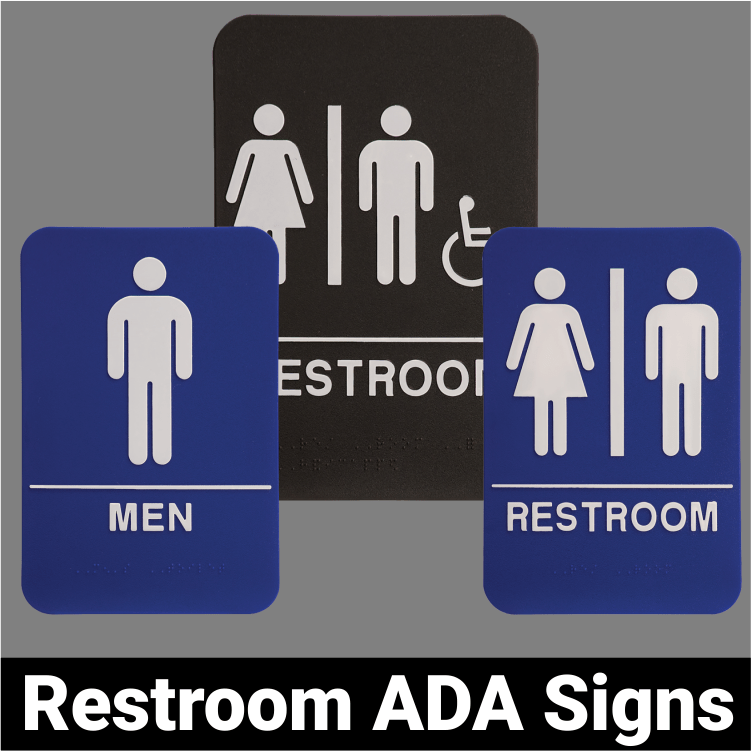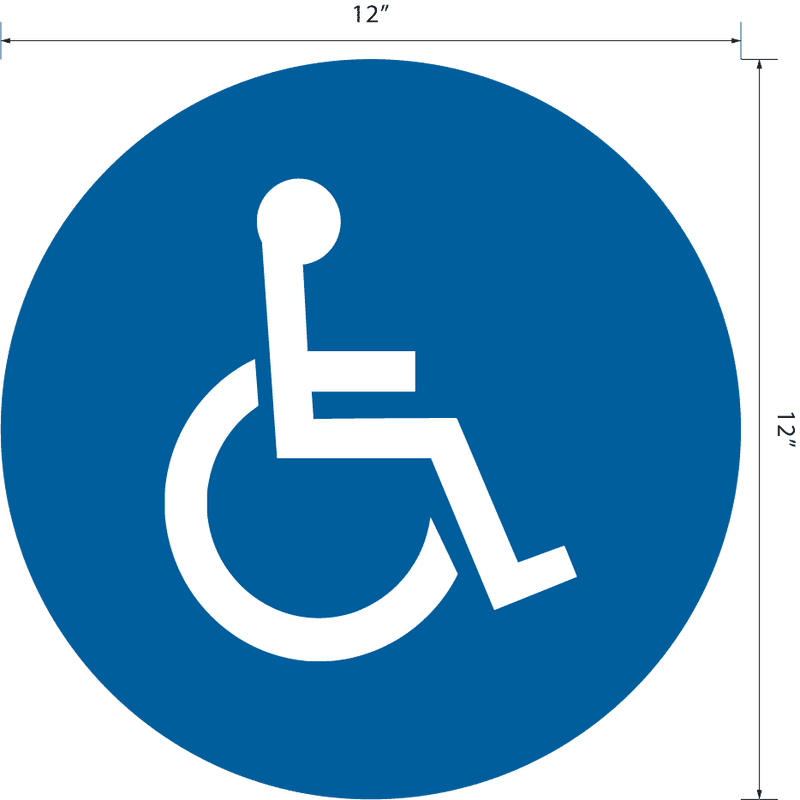ADA Signs: Crucial Devices for Inclusive Settings
ADA Signs: Crucial Devices for Inclusive Settings
Blog Article
ADA Signage: Making Certain Ease Of Access and Conformity in Public Spaces
ADA signs plays an important duty in assuring accessibility and compliance within public areas, dramatically adding to a comprehensive environment for individuals with impairments. As we check out the subtleties of ADA signs, from responsive attributes to make intricacies, it's essential to think about just how these components integrate to promote the civil liberties of all customers.
Importance of ADA Signage
In modern society, the relevance of ADA signage expands past plain conformity with lawful requireds to symbolize a commitment to inclusivity and ease of access for all individuals. These signs are important in creating environments where people with handicaps can browse public areas with the exact same ease and independence as those without handicaps. By giving clear and standard info, ADA signs makes certain that every person can access centers, services, and information without barriers.
The value of ADA signage depends on its capacity to improve the lifestyle for people with handicaps by advertising equal accessibility. It removes the obstacles that could or else hinder their capacity to take part fully in community life. Moreover, these indications act as visible signs of a company's dedication to diversity and equality, mirroring wider social values that champion the legal rights and dignity of all people.
In addition, ADA signage plays a crucial duty in public security. By leading individuals to departures, restrooms, and other essential facilities, it makes certain that all people, no matter physical capacity, can evacuate safely throughout emergencies. In summary, ADA signs is not simply a regulatory demand yet a powerful tool for cultivating a fair and inclusive society.
Trick Aspects of Conformity

Positioning is important; signs need to be mounted in areas that are conveniently noticeable and obtainable. Commonly, signs needs to be placed in between 48 and 60 inches from the ground to make certain access for both standing and mobility device customers. Responsive aspects, such as Braille, are vital for individuals with visual impairments, providing critical information in a non-visual layout.
High-contrast shades between the text and background are essential to boost readability for individuals with low vision. The ADA mandates specific comparison proportions to guarantee clarity. Additionally, personality dimension is an essential consideration, with minimal elevation requirements determined by the watching range to guarantee readability from various angles.
Layout Factors To Consider for Ease Of Access
Designing easily accessible signage needs a meticulous method to guarantee it satisfies the demands of all customers, specifically those with impairments. The dimension of the message is equally crucial, with ADA guidelines suggesting a minimal elevation based on viewing distance to make sure readability.
Contrasting colors between text and history are important for exposure, especially for individuals with visual impairments. Additionally, tactile elements, such as Braille and raised characters, are vital for people that are blind or have reduced vision.
In addition, the positioning of signs plays a considerable function in availability. Indications ought to be installed in locations that are easily obtainable and unhampered. Ensuring that signs is placed at proper heights and angles official statement enables all customers, consisting of those utilizing wheelchairs, to interact with them properly.
Typical Errors to Avoid

Another widespread error is the wrong placement of signage. ADA standards specify accurate height and place requirements to make certain that indications are easily noticeable and reachable by all individuals, consisting of those using mobility devices. Ignoring these standards not only interferes with availability but likewise risks non-compliance with lawful standards.
Furthermore, insufficient contrast in between text and history is a frequent oversight. Sufficient comparison is vital for readability, specifically for individuals with reduced vision. Developers in some cases pick shades that are visually attractive yet lack the needed comparison, rendering the text hard to discern.
Finally, some developers fall short to incorporate tactile components, such as Braille, which are crucial for people who are blind. Omitting these functions not Source just causes non-compliance with ADA regulations however likewise limits accessibility for a segment of the population that counts on responsive details.
Future Trends in Signs
Advancements in innovation and boosting recognition of inclusivity are forming the future trends in signage style. As society ends up being a lot more aware of varied demands, the integration of smart technologies into signage is getting grip. Digital signs, for circumstances, is advancing to consist of real-time updates and interactive features, which can be important in supplying dynamic info in public rooms. These signs frequently incorporate touch check over here screens or gesture-based controls, enabling customers to browse material tailored to their particular requirements.
Another emerging fad is the utilization of augmented fact (AR) to boost individual experience. AR-enabled signs can overlay electronic info onto the physical setting, giving visually damaged people with auditory or haptic feedback. ADA Signs. This modern technology not just improves ease of access but additionally develops an appealing experience for all individuals
Sustainability is likewise a significant aspect influencing signs trends. Environment-friendly products and energy-efficient lighting options are being focused on to align with worldwide environmental objectives. Improvements in products science are leading to the advancement of even more durable and weather-resistant indicators.
Conclusion
ADA signage plays a crucial duty in assuring ease of access and compliance within public rooms by incorporating tactile aspects, high-contrast shades, and critical placement. The adherence to ADA standards not only assists in secure navigation for individuals with impairments however likewise indicates a company's devotion to variety and inclusivity. By staying clear of usual errors and accepting future trends, public spaces can continue to advance these values, guaranteeing that the legal rights and self-respect of all individuals are respected and supported.
ADA signage plays a vital duty in assuring access and conformity within public rooms, dramatically adding to a comprehensive atmosphere for individuals with impairments. As we explore the nuances of ADA signs, from responsive functions to create ins and outs, it's vital to think about exactly how these elements integrate to promote the legal rights of all individuals.In contemporary society, the value of ADA signs prolongs beyond plain conformity with legal mandates to embody a dedication to inclusivity and availability for all individuals. By providing clear and standard information, ADA signs makes sure that everybody can access facilities, solutions, and info without barriers.
ADA signs plays an important duty in ensuring availability and compliance within public rooms by integrating tactile components, high-contrast colors, and critical placement. (ADA Signs)
Report this page